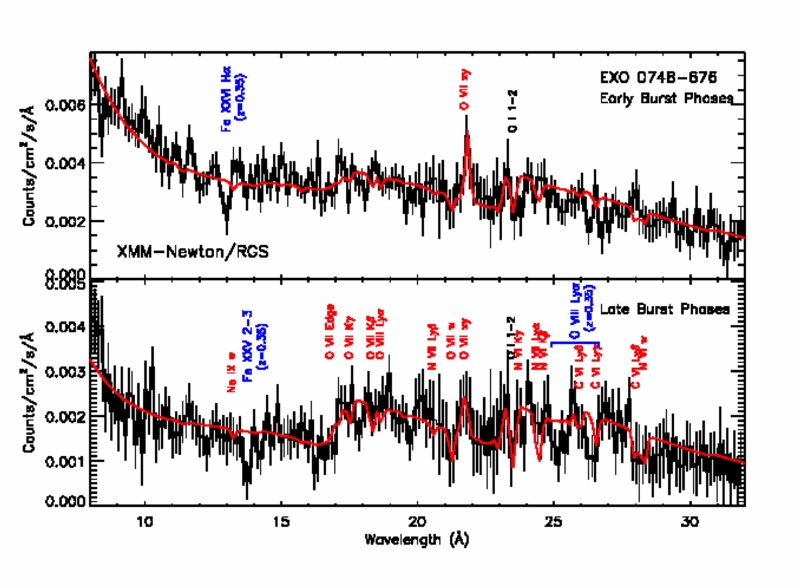
 Credit: J. Cottam, F. Paerels, M. Mendez, 2002, Nature, vol. 420, pg. 51
Credit: J. Cottam, F. Paerels, M. Mendez, 2002, Nature, vol. 420, pg. 51
Dissecting a Neutron Star
Compact objects known as neutron stars are incredibly dense: they pack a sun's worth of mass into a ball the size of Washington DC. No one is really sure how matter behaves at such high densities. It's impossible to physically dissect a neutron star to see what it's made of, but astrophysicists can infer the internal structure based on how large the neutron star is for its mass. The mass-radius relation however is difficult to reliably determine; masses can sometimes be determined from orbital motion if the neutron star has a companion, but the size of the neutron star is extremely hard to constrain. Recently astronomers have made what is believed to be the best determination of the mass-radius for a neutron star, using the high sensitivity of the XMM-Newton X-ray observatory. Using the Reflection Grating Spectrometer instrument on XMM-Newton, astronomers have
resolved absorption features from highly ionized iron lying in front of the neutron star. The X-ray spectrum (brightness versus X-ray wavelength) is shown above in black, while the X-ray absorption lines are marked in blue (and other features are marked in red). The apparent wavelength of these absorption lines determines the strength of the neutron star's gravity at the location of the iron absorber, and, since gravity varies with distance, the size of the neutron star can be determined. The XMM spectrum suggests that this particular neutron star is made of rather "normal" neutrons, and not some more exotic form of matter.
Last Week *
HEA Dictionary * Archive
* Search HEAPOW
* Education
Each week the HEASARC
brings you new, exciting and beautiful images from X-ray and Gamma ray
astronomy. Check back each week and be sure to check out the HEAPOW archive!
Page Author: Dr. Michael F. Corcoran
Last modified November 10, 2002


